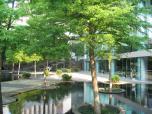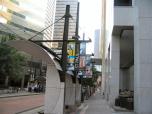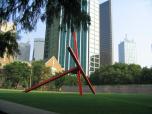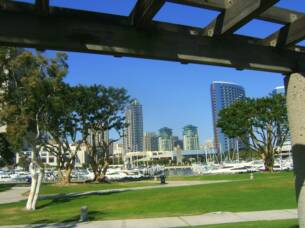




As one considers what are in his opinion, the world’s greatest cities, he can think about the area around Notre Dame in Paris, the Charles Bridge and Hradcany Castle in Prague, the music that permeates through Vienna, the eclectic hustle and bustle of New York, and any other locale from San Francisco to Shanghai. The churches, bridges, opera houses, plazas, and opulent commercial buildings all make their imprint upon a city; however it is the art of good city planning that ties everything together and helps to facilitate people wanting to linger in an area because the city is greater than the sum of its parts.
Mike Coker, Certified Planner, (AICP), president of the Michael R. Coker Company, has been making an impact on both the individual components and the larger community for several decades. Since he started his firm in 1996, his clients have comprised individual and corporate developers, city and county governments, neighborhood associations and charities. He impacted Dallas in a significant manner through his responsibilities as Director of the City of Dallas, Department of Planning and Development from 1986-1994, when he was involved in the effort that enabled DART stations to be significant magnets for investment. That has led to a shifting particularly in Central Dallas development patterns that will only continue to grow in momentum in the coming decades.
I sat down with Mike in his office on Swiss Avenue recently to hear his perspective about where Dallas is today and how even small entities can make a significant impact upon their neighborhoods and perhaps the greater community.
Chuck: What do you view as the most successful initiative to transform an area of Dallas in the past twenty years and why do you choose that example?
Mike: The Downtown Housing Initiative focused on by the City Council in the late 1980’s and early 1990’s was among the most successful. That initiative allowed people to consider living inside the freeway loop and nearby in North Oak Cliff, the Cedars, Uptown, East Dallas and other neighborhoods. It was the most important piece to revitalize the Dallas central business district (CBD). Before that initiative only 300 people lived in the Dallas CBD, all in the Manor House. As a result of this initiative we have a much more vibrant and interesting central city area. It still has a couple of hundred thousand jobs, but now people live, work and play there as well.
The city’s continuing commitment to the Arts District and the expansion of cultural activities has been another positive improvement city leaders have undertaken, especially in the Downtown area. Writers’s note: The master plan for the Dallas Arts District commenced in 1982 and has led to a district today that is a 19-block, 68-acre site with 14 different cultural venues.
Chuck: How can good planning be carried out in a city like Dallas without too much governmental regulation that stifles creativity?
Mike: Dallas is not unique when architects and planners are living with regulations that potentially constrain creativity. Dallas has many construction and development regulations, however they are directed more toward life-safety issues rather than the aesthetics of urban and architectural design.
Euclidean zoning creates basketfuls of constraints on creativity by trying to minimize interaction of creative uses. Historically Dallas used this segregation of uses and that resulted in homogenous areas: residential, retail, office, industrial, but not much mixed use. The City of Dallas is trying to move to a better zoning environment through form based zoning which focuses more on form than use.
The City went through a transition era from 1965 through 1985 where planned development districts were created providing the opportunity for mixed-use developments to occur.
Creating mixed use environments that are walk able, have good transportation systems, and that allow people to live, work, worship and play in their communities can be achieved by a planning framework
Chuck: To what extent should development or redevelopment in a city be laizze-faire and to what extent should every area of the city be very planned?
Mike: I want to specifically focus on parking as it relates to this question. Parking is often the tail wagging the development dog. In some areas, the market should determine how parking is handled. In some transit oriented development (TOD) areas with housing, such as Boston, parking may not be needed. In some neighborhoods around the country, people depend completely on rail. It might be time for cities or certain districts in cities to consider establishing maximum parking ratios. Cities should be creative by minimizing the amount of parking in certain areas and let the market establish the demand.
Chuck: When you think about the ideal city that you have traveled to, what comes to mind?
Mike: A number of cities have done a laudable job with their central cities. I like Charlotte. Its housing and mixed-use developments are a plus. One negative I would say about Charlotte is it has a requirement that 50% of ground floor space in its downtown buildings must be set aside for retail. This is too much of a constraint and thus there are many vacant spaces. I like Atlanta. It is pretty walk able and has a good public transportation system. Another city I like is San Diego. I was born there in Naval Medical Center San Diego at Balboa Park.
Chuck: What does Dallas look like in 2030?
Mike: I see a much more creative approach to design in Dallas community wide during the next 20 years. Change has come slowly to Dallas. There have been many good starts to change this city. True change that is dynamic however, takes time. The Dallas central city will become much denser as many more people move closer to work, shopping, and cultural opportunities. Other areas in the city of Dallas where increasing density will occur include the Galleria, Park Central and the Medical District and southern and west Dallas. There will be much more density with what is already in these areas, and the single family communities will remain. It is also important to remember that Dallas is just part of the DFW metroplex. It has all of the geography that it will ever have. The 16 county North Central Texas region will double in population. All across the region, there will be more demands for housing, transportation, food and distribution. In summary, we will see a much more economically diverse community with much more density.
Chuck: Why did you choose this career?
Mike: Really, the career chose me. I have been blessed to have leaders who trusted me and gave me the opportunity to provide leadership in a variety of governmental positions. Former city manager Chuck Anderson gave me the opportunity to lead the Department of Planning and Development during a transitional period in Dallas.
Chuck: If one individual wants to affect change in a particular neighborhood or part of town but does not have a lot of contacts, what would you advise him or her to do?
Mike: Identify someone or some entity or group who have the contacts needed in the environment where their interests a located. Dallas is fortunate to have a variety of skilled professional consulting groups and not for profits groups that may provide a great deal of assistance in any type of development.
Chuck: If one is a church or religious non-profit providing ministry to groups such as the homeless, poor, drug addicts or some other related population, what should it do to make its presence in or expansion in a neighborhood more palatable to the neighborhood?
Mike: I have been on the board for the Union Gospel Mission for a number of years, and have been performing a project for Good Shepherd Community Center in West Dallas. It is important that these institutions ensure that their neighbors know who they are and what they do so that the neighborhood appreciates that they are an asset. Union Gospel Mission has included the businesses around it in its decision making process so that the businesspeople know the issues and are not reading about Union Gospel Mission’s plans in the paper. Communication is definitely the key. If constraints exist, the organization needs to let people know how it operates and what it wants to accomplish. Hiding causes difficulty.
Chuck: If a church wants to be relevant in the urban culture in 2030 what must it be about as it relates to the urban community?
Mike: Churches and other religious institutions will need to be inclusive. You have to participate in neighborhood watches and community organizations. Nonprofits need to sponsor some of their community activities. If the institution has a use that is different on its property, the leaders need to let people know what they are doing and how they are doing it. They need to work hard to address any issues or concerns that their neighbors have.
Churches are important components of Dallas and they have worked with the city to come up with creative solutions to many problems. This has improved their participation in their communities and their perception as community members.
Chuck: How can a church or religious institution contribute to the concepts of beauty and good planning?
Mike: Four things comprise a community: houses, worship centers, schools, and retail providing for life’s necessities. Religious institutions have been the social foundation for communities since there were religious institutions.
Most start small and don’t have the resources to make initial impacts on beauty and good planning. It takes time for them to mature and to have the resources to make a lasting community impact.
St. Michaels and All Saints Episcopal Church is one positive example among many. On their 75th anniversary, they adopted a community in East Dallas to help improve its viability. This community is bound by Grand Avenue, I-30 and Haskell Avenue near Fair Park. They made a commitment to help improve the community get their arms around improving their social and cultural fabric. The church began by creating a park, and underwrote the design and construction David’s Place, a Head Start project. In 2009-10, T. Boone Pickens gave the community a $6 million grant to acquire the rest of the property needed to complete a larger, contiguous park. They built a new community center and police substation. This religious institution is a bright light showing the way for religious institutions to participate directly in the planning for vibrant communities.
Designing The City
Posted:April 1, 2012 by Chuck DeShazo
